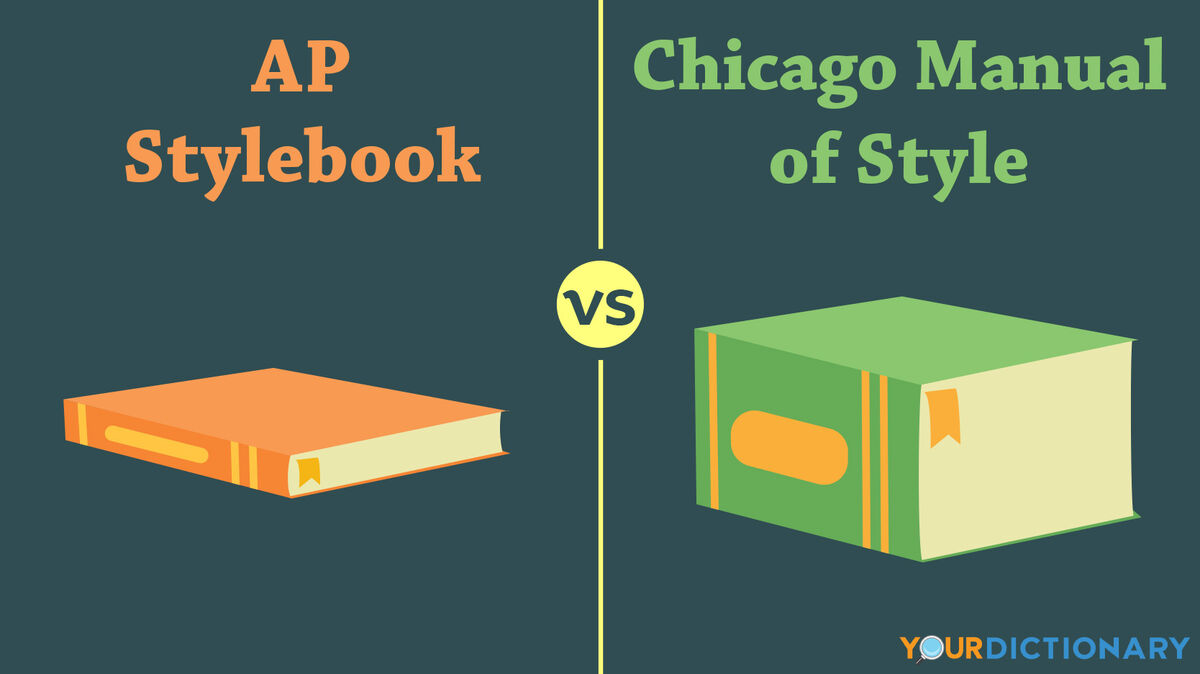
The Associated Press Stylebook (AP Stylebook) and The Chicago Manual of Style are two very different guides for two very different groups of people who make their living with the written word. The Chicago Manual of Style is by far the larger reference work, with over 1,140 pages. The AP Stylebook has about 630 pages. Learn more about the differences between The Chicago Manual of Style and The AP Stylebook.
Main Differences: AP Stylebook vs. Chicago Manual of Style
Writing is all about style. Therefore, many books cover writing styles, like The Chicago Manual of Style and The AP Stylebook. When it comes to AP vs. Chicago style, the information contained in each stylebook has a small crossover factor, but, in general, each is a specialized reference work for its intended profession.
AP Stylebook
The AP Stylebook concerns itself with a much smaller group of writers: those who produce newspaper or magazine copy and the writers concerned with public relations and informational news releases. The citing of sources is treated much differently in news media once the final product is produced. There is very little regarding the citing of sources in a bibliography in The AP Stylebook.
Chicago Manual of Style
The Chicago Manual of Style is a much larger and detail-oriented work primarily because of the breadth of its intended audience: writers of every kind from the latest mystery author to the doctor writing articles for a medical journal. It covers the concerns of editing all of those works and laying out the various works by publishers. Large portions are devoted to citing other sources, reference lists and bibliographies.
AP Stylebook Content
The AP Stylebook covers the actual rules, content and instructions for setting up news articles correctly and using correct grammar. About 340 pages of the book are devoted to a combination of a dictionary, thesaurus and encyclopedia covering the most commonly misused or confused places, words and concepts presented in news articles.
It is more geared toward ensuring that the factual information regarding such things as the correct usage of titles of nobility or the correct meaning of military acronyms is observed than laying out format rules for the actual writing of a news article. There are certain guidelines regarding the construction and formatting of different types of articles, like business, data journalism and digital security, but over half of the book is devoted to grammar.
Chicago Manual of Style Content
The Chicago Manual of Style is much more oriented to the technical aspects of writing and publishing in a correct fashion. There are extensive sections on punctuation, the correct quoting of sources, creating quotations, and references. Separate sections are included for tables and charts, the inclusion of illustrations and how to properly express mathematics and numbers in written form.
There is a portion on names and terms somewhat similar to that in The AP Stylebook but much smaller and intended more to guide the writer in proper inclusion in sentence structure and usage than factual accuracy.
Main Similarities: AP Stylebook and Chicago Manual of Style
Since both The AP Stylebook and The Chicago Manual of Style are books on writing style, they do have a bit of overlap. See a few areas of similarities in these two household names.
Plagiarism
A similarity between the two works is that both have guidelines to prevent their users from falling prey to having their writing questioned. In the case of the Chicago style, this takes the form of comprehensive guidelines for distinguishing between one's original work and quotes or sections attributed to another source or author. This guidance aids the writer in guarding against charges of plagiarism or intellectual property infringement.
Libel
The AP Stylebook has a section similar to this but specific to a concern more commonly encountered by news and media professionals: libel.
The guidance regarding libel presented in The AP Stylebook is not intended to be a textbook or comprehensive legal guide but rather a working guide for the writers and editors. Topics covered in this section include:
- First Amendment Rights
- Treatment of public officials
- The right to privacy of individuals and groups
The AP Stylebook is very clear that any complex questions of libel and associated topics should be brought to the attention of competent legal advisers. The guidance is not the definitive answer to any given issue.
Detail Orientation
The AP Stylebook and The Chicago Manual of Style are both written in the same arena but are directed at two different sets of users.
- Chicago style is much more detail-oriented toward the actual nuts and bolts of manuscript and article construction, including how to correctly cite other sources than your own work.
- AP style concentrates on being a general guide to news and public relations writing to help the writer and editor avoid potentially embarrassing mistakes in large distribution work.
In book and article writing, the creator has weeks, months or years to get every detail correct and the Chicago style reflects that high level of craftsmanship. In news or digital media, however, deadlines and the need to publish immediately demands a much more rough and ready guide that sets general guides and relies on the individual writer’s talent and the editor to make sure the details come out right.
Chicago vs. AP Style: Different Writing Styles
Professional and technical writing can take different forms. In the media, you have limited time to get it right. While in a technical paper about history, you might have years to perfect your manuscript. There isn't a sure winner in the big AP vs. Chicago style debate because they fill different needs. Want to know more about writing styles? Check out the MLA writing style.